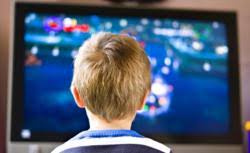 Background: In 2016, the American Academy of Pediatrics (AAP) released new guidelines that recommend limiting screen-time for children 2-5 years old to one hour a day of high-quality programming co-viewed with a parent (AAP, 2016). Further, many developmental psychologists and health practitioners believe watching TV takes time away from activities that support young children’s healthy growth and development. This study asks: 1) Do children that spend more time reading with their parents watch less TV? and 2) Does the association between parent-child book reading and TV-viewing vary depending on family structure (e.g. single-parent v. two-parent home), mother’s level of education, household size, and whether the child attends daycare?
Background: In 2016, the American Academy of Pediatrics (AAP) released new guidelines that recommend limiting screen-time for children 2-5 years old to one hour a day of high-quality programming co-viewed with a parent (AAP, 2016). Further, many developmental psychologists and health practitioners believe watching TV takes time away from activities that support young children’s healthy growth and development. This study asks: 1) Do children that spend more time reading with their parents watch less TV? and 2) Does the association between parent-child book reading and TV-viewing vary depending on family structure (e.g. single-parent v. two-parent home), mother’s level of education, household size, and whether the child attends daycare?
Authors: Kiren S. Khan, Assistant Professor, Rhodes College; Kelly M. Purtell, Assistant Professor, The Ohio State University; Jessica A. R. Logan, Assistant Professor, The Ohio State University; Arya Ansari, Postdoctoral Research Associate, University of Virginia; Laura M. Justice, EHE Distinguished Professor, The Ohio State University
Original Citation: Khan, K. S., Purtell, K. M., Logan, J. A. R., Ansari, A., & Justice, L. M. (2017). Association between television viewing and parent-child reading in the early home environment. Journal of Developmental Behavioral Pediatrics, 38(7), 521-527.
Sample: This study used data from two samples: 1) 8900 children who were part of the national Early Childhood Longitudinal Study Birth Cohort (ECLS-B; Snow et al., 2009); and 2) 407 children who were part of the Preschool Experiences in Rural Classrooms study (PERC) conducted in rural, Appalachian communities in two states. Most of the children were white (ECLS-B = 55%; PERC = 94%), came from families with annual incomes of less than $35,000 (ECLS-B = 43%; PERC = 74%), and were just over four-years-old on average (ECLS-B = 4.37 years-old; PERC = 4.34 years-old). Most had mothers who had only earned a high school diploma (PERC = 56%), or had some college experience (ECLS-B = 31%). In both the ECLS-B and PERC, parents completed a survey on their basic demographic information, the amount of time they spent reading to their child each week, and the number of hours their children watched TV on a typical weekday (Monday to Friday).
Results:
- In both samples, children watched an average of two hours of TV per weekday.
- Most parents reported reading to their child “daily” (ECLS-B) or “a lot” (PERC).
- Children who watched less TV, read more with their parents and vice-versa (see Figure 1 below).
- Children who watched more TV typically had mothers with lower levels of education.
- The inverse association between watching TV and parent-child reading did not vary based on family structure, household size, or daycare attendance.

Figure 1. Inverse association between child TV-viewing and parent-child reading for both the ECLS-B (national) and PERC (rural) samples.
Discussion: First, this study suggests that most young children watch more than the AAP’s recommended one hour of TV per day. Second, this study provides strong evidence that the more time young children spend watching TV, the less time they spend reading with their parents, and vice-versa. Finally, this pattern appears to be the same, regardless of the home environment (single-parent home, whether the child is in daycare, etc.). This study is limited by the fact that it relies on parent report and does not collect data on other types of screen exposure (e.g. mobile phones and tablets). Overall, these results suggest the need for further research into parents’ motivations and beliefs regarding screen time for young children and interventions that encourage parents to interact positively with their children through both books and media.
Reference:
American Academy of Pediatrics. Council on communications and media. Media and young minds. Pediatrics. 2016;138:e20162591

